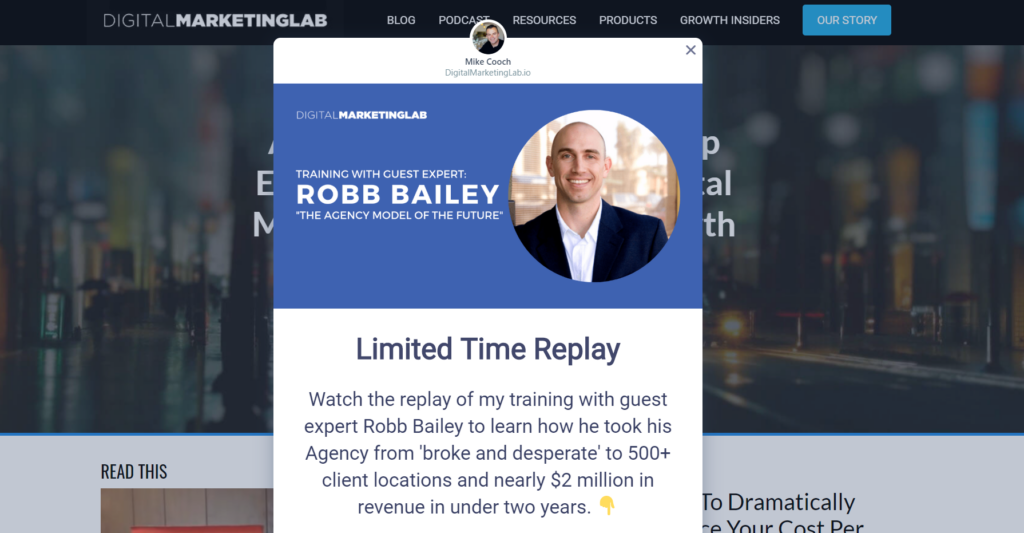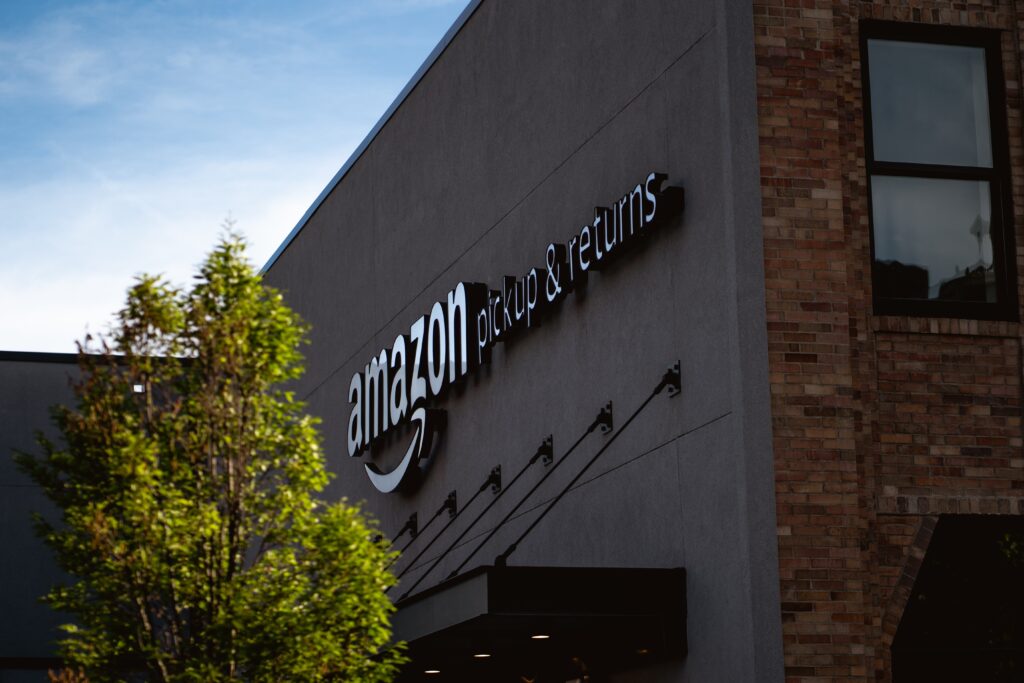Hey there. It’s Mike Cooch.
As I am writing this article August is coming. After that, we’ll hit September thus I am starting my annual planning process for next year.
That may seem early to you to get started on this process. It did to me for years, actually for about a dozen years.
The thing is, in the past, I would start my annual planning process by doing a little bit of homework in November.
But December is where I had the days on the calendar booked to sit down. It is when I actually go through the process of creating my plans and answering all the questions. Basically doing all the homework that was required of me.
But what happened for over a dozen years is I realize that December is kind of a mess.
There are holidays. You got the new year coming up at the very beginning of January and you have people who are traveling for the holidays.
People just want to take time off during the holidays to do what they wanted to do. I myself had parties I wanted to go to.
So what would happen is I would start January without a truly fully baked plan.
Last minute planning: A Big No-no
I would have a plan that was close, while some are pretty clear. Then there are those that are still a bit fuzzy in my head. I also have ideas where I don’t know exactly what we are going to do and how are we going to do it.
It wasn’t quite well documented and laid down in a step by step fashion like I wanted it to be.
And it is towards the end of January that I would really get the momentum going that I would have wanted to have at the very beginning of January.
That’s no way to start the year.
You want to start the year absolutely jumping out of the gates at full speed. Knowing that you got a plan that you’re really confident in and you know exactly how you’re going to execute it.
So if you are used to starting your process late and you don’t really have a planning process (hopefully you have a process though) or you are winging it a bit because I know many, many entrepreneurs do.
That’s a huge mistake.
Create a plan early
I can assure you that you will always get more growth and more results if you have a planning process. So make sure you have one.

But if you’re starting it in December, I highly encourage you to start it instead on months of September, October, November to get a real fully baked plan.
So you’re going into December with your plan nailed down for January one. That way you have a relaxed December.
Which is why moving the planning back in the calendar is so important for me right now. This is because my business is a lifestyle business.
Now I’m not trying to raise venture capital, I’m not trying to sell the business or anything like that.
It’s about creating the lifestyle that I want. I have kids and my kids are going to be out of school for a lot of December. I want to be able to enjoy the holidays with them, go skiing with them and the likes.
It is all about not being stressed about creating plans for the next year and trying to take the time that’s necessary to do that. Because it takes a bit of time to create a plan like that. It’s a good amount of work and I think a lot of people underestimate that.
So I want this process to be done by December. One fully baked plan so that when I hit the holidays, I can enjoy them.
I can take time off, I can be with my kids, I can go skiing and not be stressed about what’s going to happen January one. So I encourage you to adjust your schedule.
Like I’ve adjusted mine.
Creating a plan for success
I know a lot of people don’t have a process that they really are confident in or don’t know why they’re doing what they’re doing.
Maybe they feel like they’re supposed to do some sort of review of the business of the last year and come up with just some higher goals for the next year.
But that’s not a plan. That’s just kind of hoping that next year is going to be better.
I believe in creating a plan for success.
The first step in that planning process is to get very clear on the business growth equation.

A growth equation may sound a little fancy, and mind you, we’re introducing some math here. But a growth equation is exactly as it sounds.
It’s documenting these key components, activities and measures and things like that that determine whether or not your business grows.
This is a way of getting really clear about those variables that will impact growth so that you can be sure that your plan takes those variables into account and has a plan for each of those variables.
And the far majority of entrepreneurs that I meet and talk to most of them are sub 10 million in revenues, smaller teams, lifestyle businesses and they don’t know their growth equation.
They don’t have it clear. Generally, they get it but they’re missing a lot of growth opportunity. They’re not really clear and so they don’t have a really clear plan in place that takes those variables into account.
So what I thought I do is tell you what a growth equation looks like.
What is a growth equation?
To help us with analyzing and implementing growth in our business, a growth equation is needed. I’ll show you how it is.
For example, let us have Amazon and then one of my businesses so that you can compare.
It’s a lifestyle business. It’s about building an email list and, and being able to send out offers and things like that.
Very common internet marketing style model so that you’ll be able to see what a growth equation looks like in that business as well.
When you have this really clear, again, that’s the first step and coming up with a really clear plan to optimize equation and grow your business.
This is something that I got actually from Sean Ellis from his hacking growth approach and we have always been very metric driven in the way that we run our businesses and the way that we think about our businesses and track our businesses.
But this is a way of just really simplifying thinking about, “What are the key metrics that are driving growth at your business and how do they all work together?”
This is an exercise in thinking through what are the key event that impacts my business and business growth. What are the metrics associated with those and then clearly documenting that.
So it’s very visible to you and anybody else in your organization if you have a team.
And then the third step in this approach, is what we’ve been teaching it with our predictable growth marketing frameworks is to systematically measure and experiment in each.
Once you’ve documented this growth equation, you now know the key areas where when we say, “Hey, make sure you’re running experiments, you now know the key areas that you should be running experiments in all the time.”
DigitalMarketingLab’s Growth Equation
We’ll use DigitalMarketingLab from my list of businesses.

For those of you who don’t know, DigitalMarketingLab is an information marketing business. We sell information products, get cold traffic going, and a membership right to growth insiders.
So, using DigitalMarketingLab’s Growth Equation, we have:
Impressions x CTR x Opt-in Rate x Sales Conversion Rate x ARPU x Conversion Rate to Subscriber x Subscriber Retention Rate
Terminologies:
Impressions – are we getting our products out there to the world
CTR – The people who are actually responding to those impressions
Opt-in rate – People who are opting in and getting out on our email list
Sales Conversion Rate – Percentage of people who are opting in
ARPU – Average Revenue per User means the revenue that you are getting from those transactions
Conversion Rate to Subscriber – Is not only just an email list of but a recurring revenue-paying subscriber
Subscriber Retention Rate – The percentage of how long you hang onto your subscribers
That is our business growth formula right there. Simple. Impressions, click through rate, opt-in rate, sales conversion rate. Those are all steps of a funnel essentially. Essentially our ARPU. Conversion rate to subscribers and in subscriber can a retention rate.
That is our formula, our equation for growing this business.
What I like about this formula is its simplicity.
It’s just nice and simple to be able to communicate with anybody in your team or to yourself.
It’s just as important, maybe more important to be able to just communicate to yourself very clearly, hey, what are the key steps and the key metrics that I need to be looking at to grow my business
If I improve any of these metrics with all other things remaining equal, my business grows. It will grow like wildfire.
So it’s nice to be able to just put it out there simply. If you have members on your team and you’re trying to train them on how they can impact the growth of your business this is a good way to show them.
This is it.
I’ve hired you to focus on that and here’s how that fits into the overall growth equation at our business. That’s very meaningful to somebody when you’re giving them that kind of clarity and insight to say, “Here’s what you are doing. Here’s how that is impacting the growth of our business.”
Amazon’s Growth Equation
Now, let me share with you Amazon’s growth equation. Just remember I did not make this up. I got this from an article about Amazon.

Amazon’s growth equation:
Vertical Expansion x Product Inventory Per Vertical x Traffic Per Product Page x Conversion to Purchase x Average Purchase Value x Repeat Purchases
Terminologies:
Vertical Expansion – Is essentially the major product lines. Examples are sporting goods, books, kitchen wares, etc.
Product Inventory Per Vertical – More choices for the people who come to the store
Traffic Per Product Page – The number of people going to the page of each product
Conversion to Purchase – This is the percentage of website visitors who purchased something
Average Purchase Value – Measures the average value of each purchase made by your customers
Repeat Purchases – This is the purchase by a consumer of the same product.
In terms of Amazon’s retail business, that is their growth equation.
It is also a simple and nice formula. This totally clarifies Amazon’s strategy. It is laid out in this equation perfectly.
No wonder Amazon is going and putting every product under the sun and their store and no wonder they are making every product available at their store. And then you can see all of the things that they’re doing to impact each of these numbers.
Like, “How do I get repeat purchasers?” Sign the customers on prime, and they will get free shipping and make speedy delivery much faster than my competition. All of those things because they know that driving repeat purchases back is critical to their growth cohesion.
Does that make sense to everybody? I hope seeing how just having a nice simple growth equation like this can really help you get clear on when Mike is saying, “Hey, run experiments and measure results and track metrics.”
You know what we’re talking about here. We’re talking about putting together this nice simple equation that clearly articulates, “Hey, here are the major variables in my business and the metrics that I’m going to use to track them.”
By the way, if you have any questions about what your growth equation should be, please ask them here or put them in our Facebook Group. Chat them into the Facebook group and I will be glad to give feedback.
Growth equation is generally the same across all businesses

The reality is that the equation for many of us is essentially the same. It’s not like many of us are doing like these crazy ambitious new business models. And for the most part, we’re all driving traffic to a store or to a website or we’re doing B2B sales and we have to sign up clients and keep clients.
It’s not that we’re all going to have these dramatically different equations or may be slight differences based on the types of products or services that you’re offering, but for the most part, they’re going to be pretty darn similar.
So I’m sure you can see now how helpful it is to have real clarity around that equation. When you have that equation documented. All of the key variables that are going to lead to growth in your business.
And when you have clarity on what those key variables are, you can make sure that the plan that you put in place takes into account each of those key variables and what activities you’re going to do to optimize each variable.
That’s how you create a plan where you can get predictable growth. Where you can get the growth that’s based on really actionable steps and not just hope.
Do your plan and get your own growth equation
My favorite saying in business is, “Hope is not a strategy”.
So create a growth plan that optimizes around that growth equation, and you can have confidence and you can run with it and you can see the results, I promise you.
All right, so if you’d like additional training on this topic, look for a link somewhere around this video. I have a good amount of content on this I can share with you on how to create your equation, some of the lessons that I’ve learned in the process of doing that, that I think will be really helpful for you.
Whatever you do, get started on your planning process now, create a predictable growth plan that you can have confidence in, so that when January one comes, you hit the ground running.
You come out of the gates fast and hard, and you create that momentum in the next year.
All right. Good luck to you. Take care.

